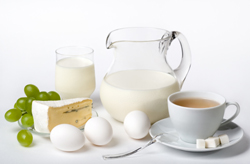Gut bacteria make healthy trans fats
Taking a supplement rich in the trans fatty acid, conjugated linoleic acid is claimed to confer many health benefits. An antioxidant, it has been categorised as a good trans fat which confers resistance to artherosclerosis and cancer and reduces body fat retention. Natural sources include meat, including lamb and beef, and dairy produce. Scientists working under the auspices of BIOCLA project worked towards the overall objective of increasing the natural levels of the unsaturated fat in beef, sheep and goat products. There is however another way of acquiring CLA and that is by using naturally occurring bacteria. These convert linoleic acid into the most biologically active isomer or form of CLA with the molecular signature of c9, t11. The bacteria capable of this conversion include fermentation bacteria species like lactobacilli and streptococci. Moreover, bacterial inhabitants of the human intestine are able to generate CLA in this way. Researchers at Teagasc, the state department of agriculture and food development in Ireland, investigated the extent to which various gastrointestinal bacteria could convert linoleic acid to CLA. Probiotic bifidobacteria commonly used in yogurt manufacture and used to promote healthy gut flora were investigated. Also under trial were proprionibacteria found in natural skin flora. Both types of bacteria were found to produce CLA, an added benefit being that the isomer was mainly the required c9, t11. They found however that there were a lot of inter-species differences in respect to this trait. The team also worked on identifying more robust and technologically viable strains by isolating species from the human intestine itself. Babies, adults and elderly patients were studied to successfully isolate new efficient bifidobacterium species. The data from this research could well provide the information for food technology to utilise the plethora of bacterial resources available in and on the body itself.







